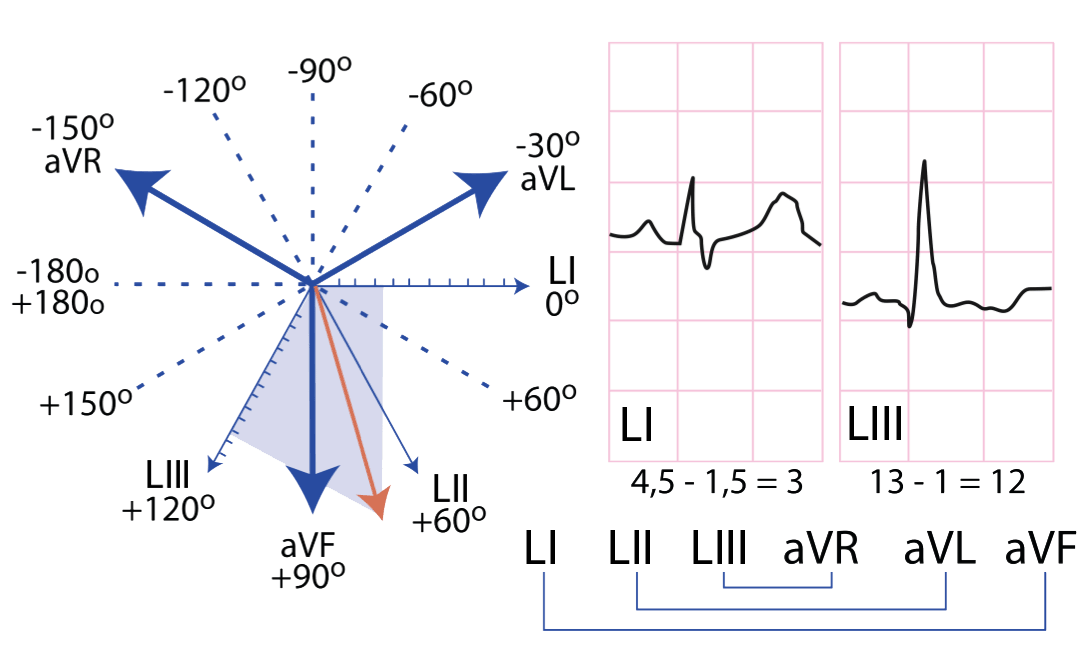ECG- Rapid Guide
Introducción
Cardiac axis determination in the frontal plane
The heart axis, or let’s call it by its proper name, the QRS axis, is nothing else but the direction of the total vector of the ventriclular depolarization. In other words, the heart axis is the main direction of the electrical stimulus through the ventricles. The Bailey Hexaxial System is widely used in the fields of electrocardiography and cardiology. It allows a clear and accurate visual representation of the direction of the heart's electrical current in the frontal plane, facilitating ECG interpretation and the identification of potential electrical abnormalities.
Figure shows the Hexaxial System, as a graphic representation of all the vectors formed in the respective frontal leads. In the Cartesian plane, aVF serves as the vertical axis, while L1 serves as the horizontal axis. Each lead has two possible degrees of direction: in Figure, L1, in positive polarity, has a vector with 0 degrees; while in negative polarity, it has a vector with 180 degrees. The axes of the P wave, the T wave, and the QRS complex can be determined separately. Normally, the cardiac electrical axis is between 0º and 90º. The intersection of both perpendiculars to L1 and L3 determines the QRS electrical axis. In this case, it is located at approximately 80°.
